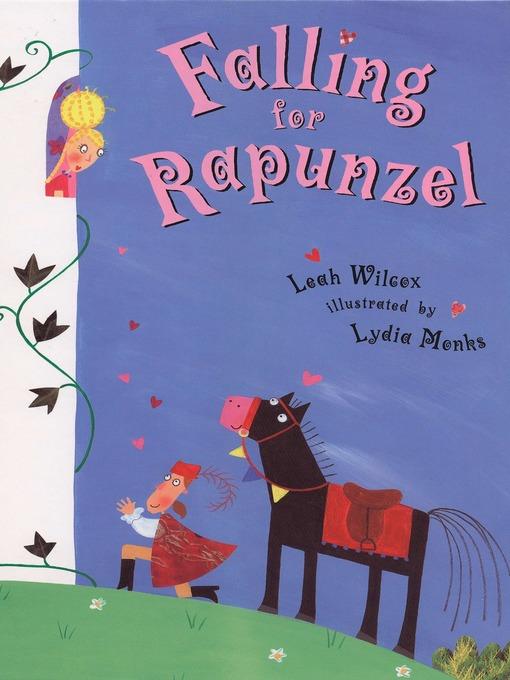
Falling for Rapunzel
فرمت کتاب
ebook
تاریخ انتشار
2003
Reading Level
0-2
ATOS
2.7
Interest Level
K-3(LG)
نویسنده
Lydia Monksشابک
9781524741471
کتاب های مرتبط
- اطلاعات
- نقد و بررسی
- دیدگاه کاربران
نقد و بررسی

January 5, 2004
"Once upon a bad hair day,/ A prince rode up Rapunzel's way," opens Wilcox's debut book, offering a slight if agreeably silly take on the classic tale. In rhymed couplets of varying cleverness, the author relates a tale of miscommunication. The prince hears Rapunzel's whine (she is "upset her hair had lost its shine") and mistakes it for a plea (after which he "sallied forth to set her free"). The misunderstandings mount: when the royal asks her to throw down her hair, the heroine instead tosses him gaily colored underwear; a request for her "curly locks" brings a deluge of dirty socks; and hearing that he wants some twine, she heaves out her "blue-ribbon swine." Monks (The Cat Barked?
) conveys the addled antics in whimsical art, rendered in an engaging mix of acrylic paint, collage and colored pencil. Among the kid-tickling images is a view of the stunned prince covered with pancake batter (which comes flying out of the tower when he asks if the lass has a ladder). Many youngsters may giggle at the wordplay (as well as the concluding twist), but the joke is pretty much a one-noter. Ages 4-9.

December 1, 2003
K-Gr 4-This humorous twist on a traditional tale will resonate with today's young readers. Told in rhyming couplets, this version features a protagonist who weeps, not from loneliness, but rather over the sorry state of her flowing blond locks. The prince, mistaking her tears for legitimate suffering, is determined to set her free and invites her to throw down her hair. Rapunzel, however, mishears his request and throws down her underwear instead. The persistent noble tries a variety of other tactics, asking for her locks, tresses, rope, twine, and ladder, each time growing less enamored as she responds with socks, dresses, a cantaloupe, a swine, and a bowl of pancake batter. Finally, he begs her to let down her braid, but instead out drops her maid, a fortuitous mistake since the servant and the prince fall madly in love and ride off together. The verses are clever and concise, and the rhyming pattern allows listeners to anticipate their endings and to giggle over the results. The rhythm is consistent and the stresses in each line flow naturally, inspiring would-be poets. Monks's delightful acrylic-and-collage illustrations add to the humor. Their bright, vivacious colors, bold patterns, fun background details (e.g., skyscrapers, airplanes, and a computer in Rapunzel's tower), and exaggerated facial expressions reinforce the silliness. Pair this with David Wiesner's The Three Pigs (Clarion, 2001) and Diane Stanley's Goldie and the Three Bears (HarperCollins, 2003) for a fresh look at classic fairy tales.-Nancy Menaldi-Scanlan, LaSalle Academy, Providence, RI
Copyright 2003 School Library Journal, LLC Used with permission.

December 1, 2003
PreS-Gr. 2. This fractured fairy tale twists Rapunzel to a fare-thee-well. Using a sprightly rhyme, Wilcox tells of a prince who spies the long-haired Rapunzel and immediately calls to her to throw down her hair. Alas, she's too far away to hear him clearly, and throws down her underwear instead. Every attempt to clarify the situation makes things worse: "'No Rapunzel, your curly locks.'" / Rapunzel threw down dirty socks." And so it goes until the prince asks Rapunzel to throw down her braid, and instead she manages to pitch down her maid--with whom the prince is quite taken. Then it's happily ever after, etc. Acrylic paint, colored pencil, and collage mix together in slapstick pictures that match the text in cheeky appeal. Of course, the story is funnier if children know the original tale, but even if they don't, this version takes on a bouncy life of its own.(Reprinted with permission of Booklist, copyright 2003, American Library Association.)

























دیدگاه کاربران